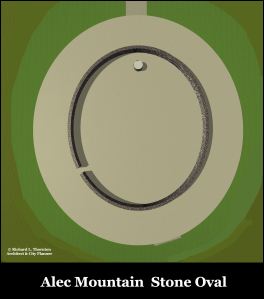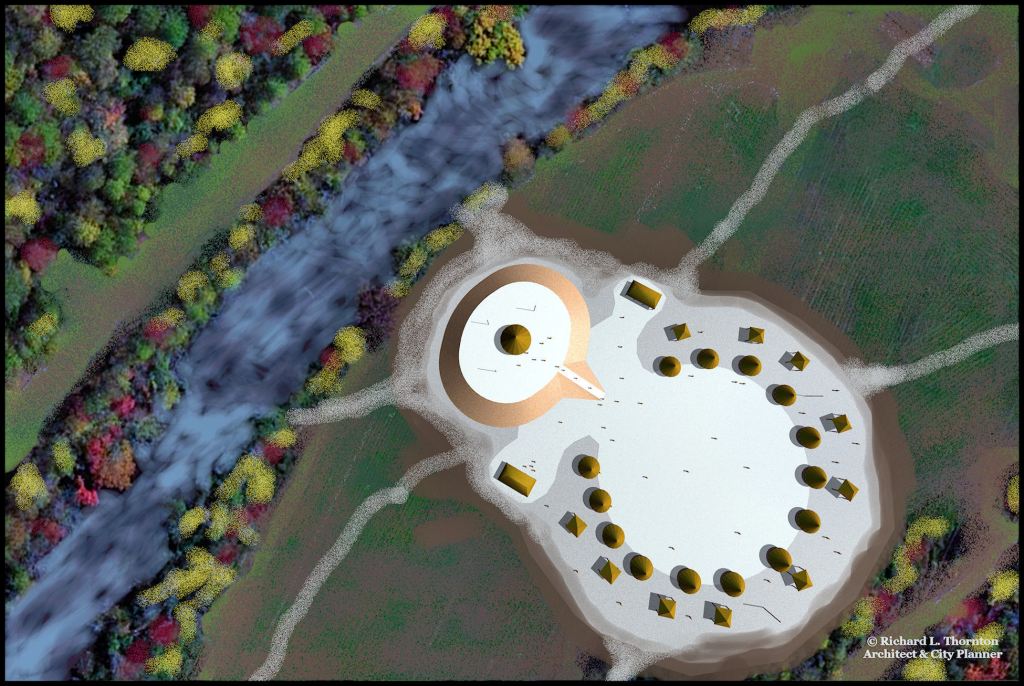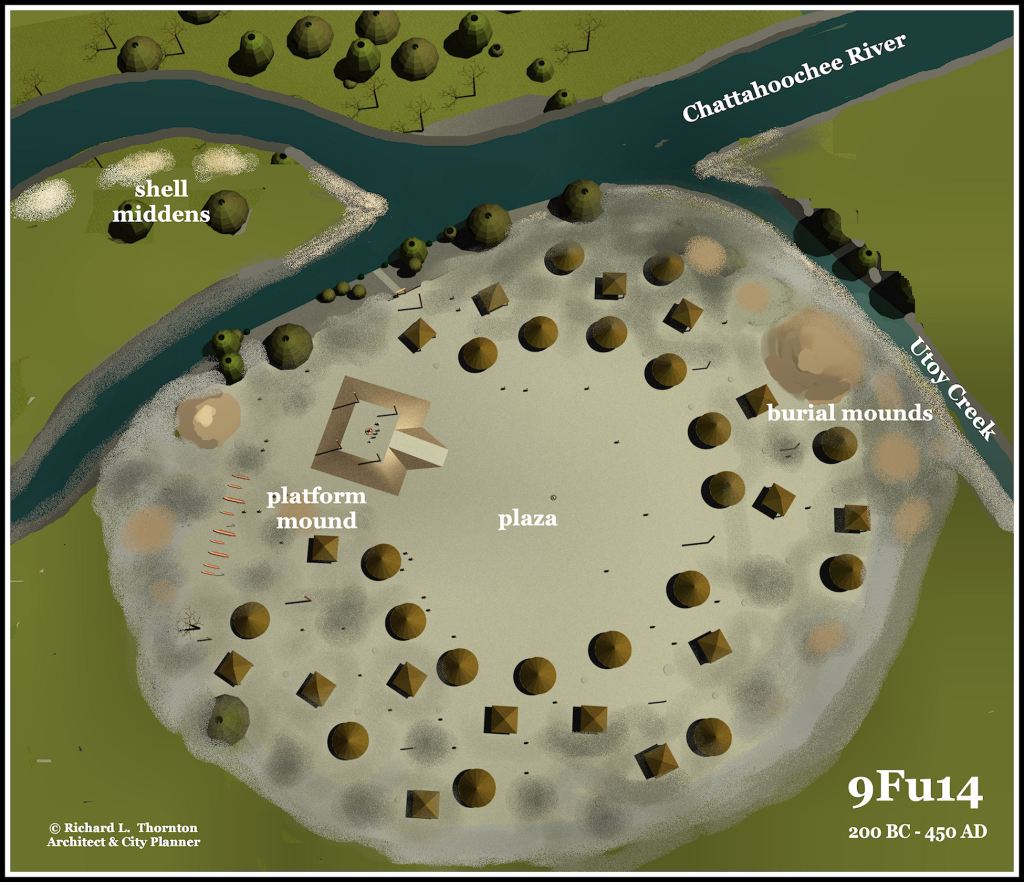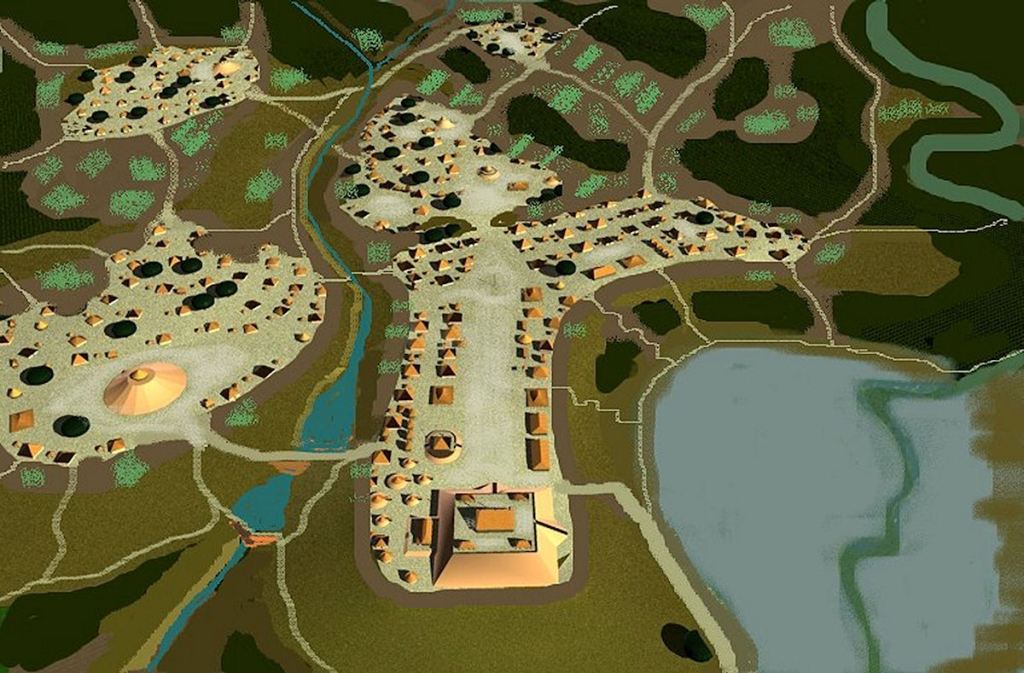by Richard L. Thornton, Architect & City Planner
Today’s Winter Solstice marks the beginning of the Maya New Year and the eighth anniversary of the premier of America Unearthed on the History Channel. Most of you probably remember that this program investigated evidence that Maya commoners migrated to the Southeastern United States after many Maya cities were abandoned around 900 AD. It has become the most watched one hour program on the History Channel . . . ever.
Near the end of the premier, it was stated that “the Creek New Year was the same as the Maya New Year.” I never said that. Back in the film company’s offices in suburban Minneapolis, someone edited out most of the seven hours that I was interviewed then in some cases had the show’s host seem to quote me. What I did say was that during certain cultural periods, the New Year began on the Winter Solstice like the Mayas, while in other periods, it began on the Summer Solstice or Equinox.
The answer is also conditioned by what you mean by “Creek Indian.” By the time that the Creek Indians had begrudgingly begun calling themselves by that name, they had forgotten their writing system, their very sophisticated & accurate surveying techniques, plus their original calendar. They were using the Gregorian calendar, introduced by the British. Both the 1658 book by Charles de Rochefort that has 10 chapters on what was to be called Georgia and the Creek Migration Legend state that the Creeks in the 1600s and early 1700s called themselves Apalache or Palache. The Apalachee in Florida never called themselves by that name, until the Spanish told them that it was their name.
In 1976, University of North Carolina-Chapel Hill anthropology graduate, Dr. Charles Hudson, wrote in his book, The Southeastern Indians, that the Creek Green Corn Festival coincided with the leap days preceding the Creek New Year on the Summer Solstice. The statement has been replicated so much that even the Oklahoma Creeks believe it to be true. Within the same wooden box in England, where I discovered the long lost Creek Migration Legend, were many other fascinating documents, written by Georgia’s Colonial Secretary, Thomas Christie. I was astonished to learn that the dates of Green Corn Festival varied as much as two months among tribal divisions of the Creek Confederacy and that very few tribes observed the New Year and Green Corn Festival concurrently. The date of the Green Corn Festival was determined by latitude and altitude.
Now, I have state-of-the-art equipment and software . . . even a Geiger counter . . . so when I have in time and we are not home-bound by a spike in the pandemic, I am going back and reexamining indigenous architecture in the Southeast.
It is interesting that the two oldest examples of architecture that I have found in Northeast Georgia are European structures, dating from the Bronze Age. The Alec Mountain Stone Oval was typical of Scotland around 3200-2400 BC, while the Fritchey Basilica is an Iberian Sun God temple, typical of about 1800 to 1200 BC.
The oldest Maya structure in Northeast Georgia dates from around 550 AD. A few Maya structures date from around 800 AD. However the majority of Maya-type structures date from 1000 AD or later. Here are some astronomical orientations for some ancient structures in northern Georgia.
The earliest examples of earthen pyramids, oriented the Summer Solstice of the “modern” Creek calendar, were introduced by the Tamale (Tamulte) around 1250 AD on the lower Chattahoochee and upper Altamaha Rivers. Such structures typified the period from around 1375 AD to 1700 AD.








;

Hi Richard, I am hoping I will be out this afternoon on the Unaka Mountain to observe the sunset and the Great Conjunction. If not I will be down on the Nolachucky checking it out near the Cane Notch Site.
Re-examining indigenous architecture with you and your fancy equipment would be an awesome learning experience. Thank you for sharing All of your years of research with us.
Wishing you a Happy New Year and a Merry Christmas.
LikeLiked by 1 person
Wishing you a Merry Christmas and Happy New Year also
LikeLiked by 1 person
_owdy, Anot-er seminar wort-y of graduate level studies, _ave started on t-e fall of t-e American Maya by Webster,
On Mon, Dec 21, 2020 at 10:44 AM The Americas Revealed wrote:
> alekmountain posted: ” by Richard L. Thornton, Architect & City Planner > Today’s Winter Solstice marks the beginning of the Maya New Year and the > eighth anniversary of the premier of America Unearthed on the History > Channel. Most of you probably remember that this progr” >
LikeLiked by 1 person